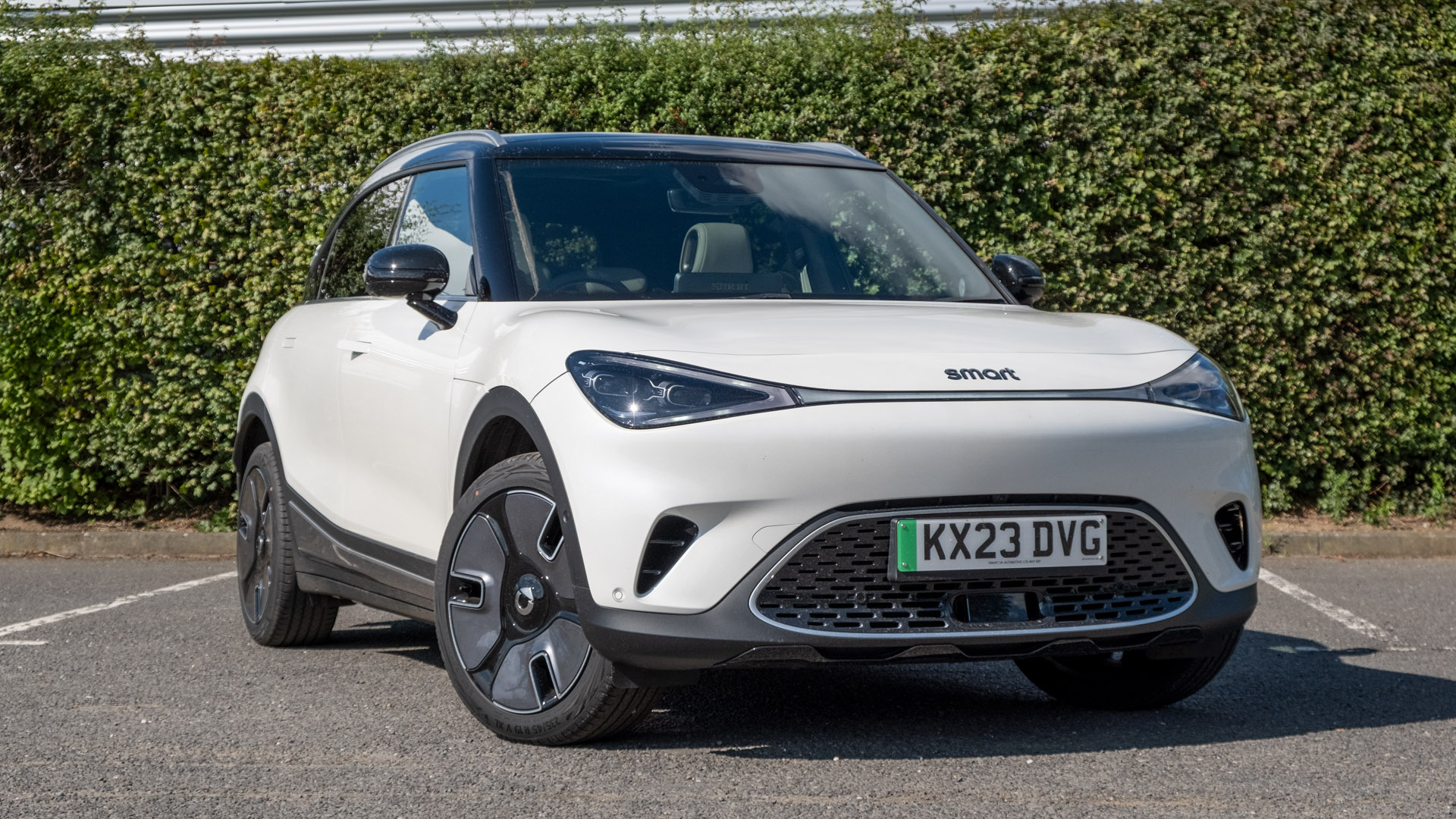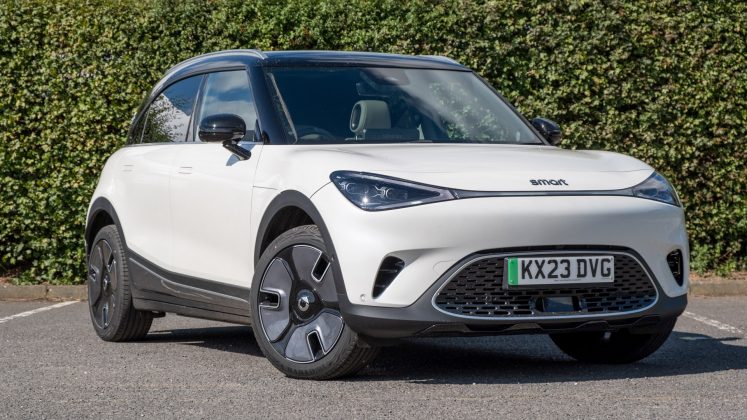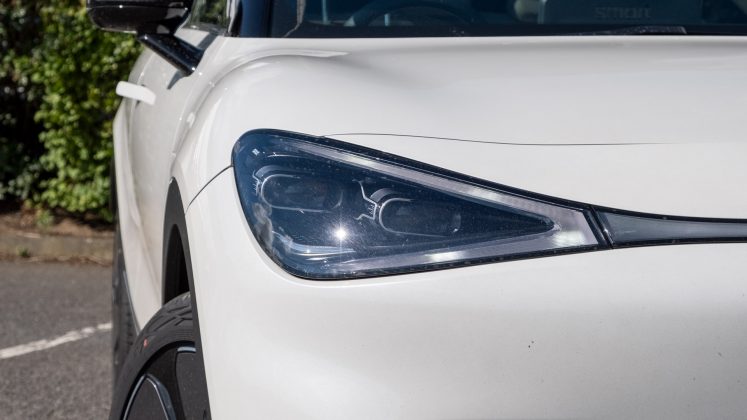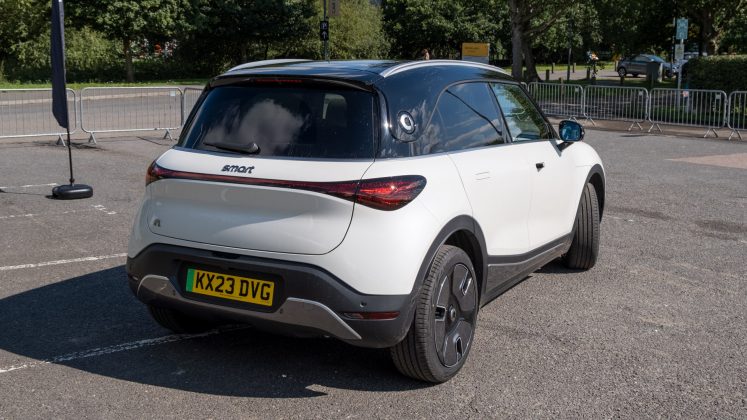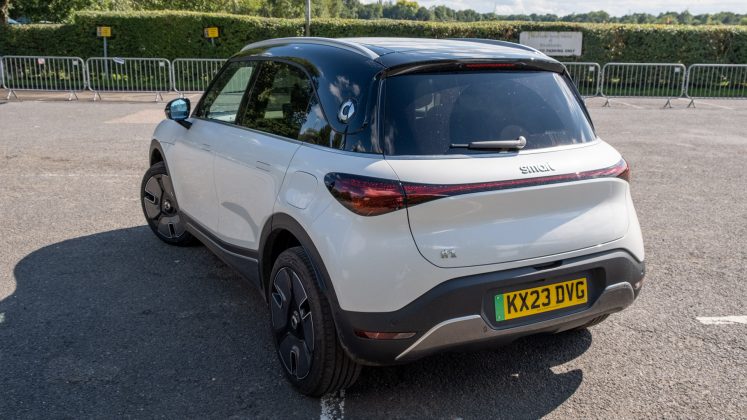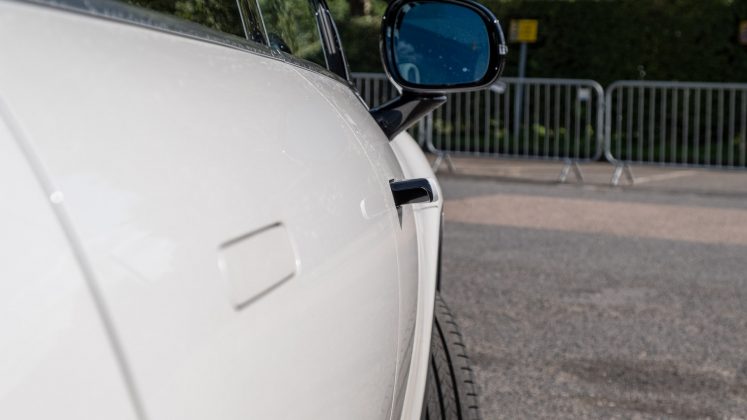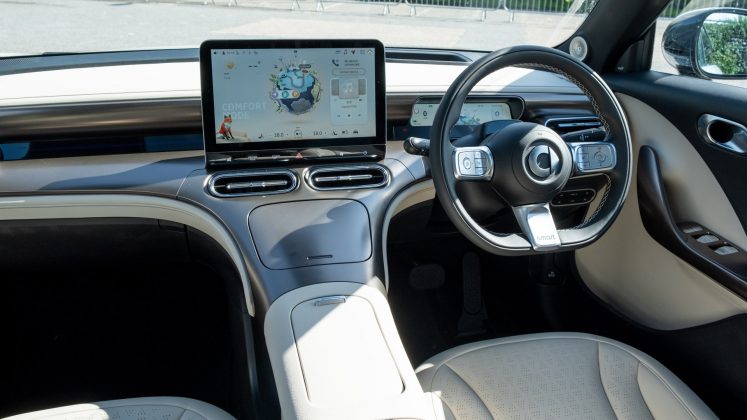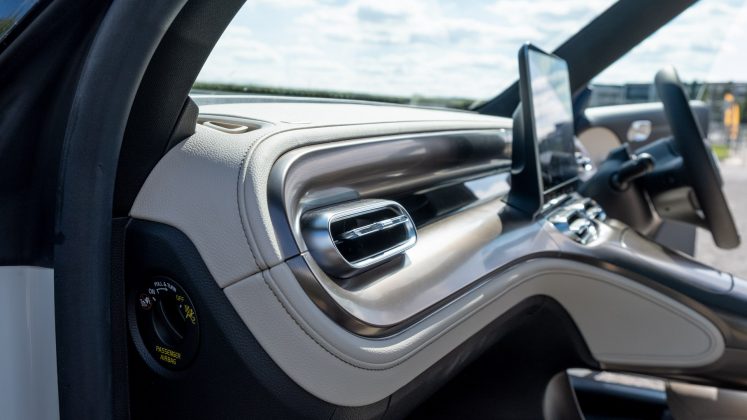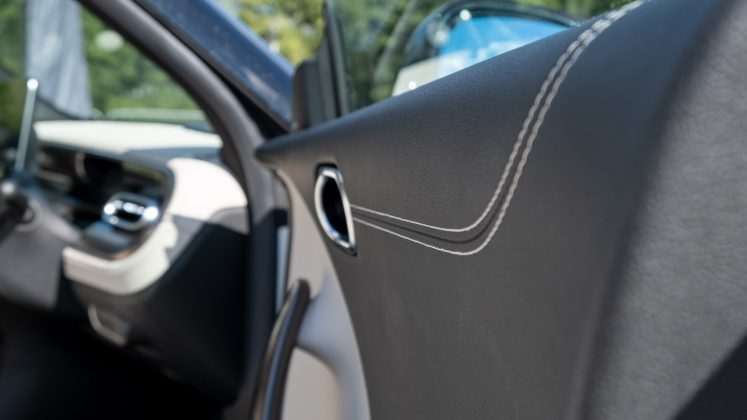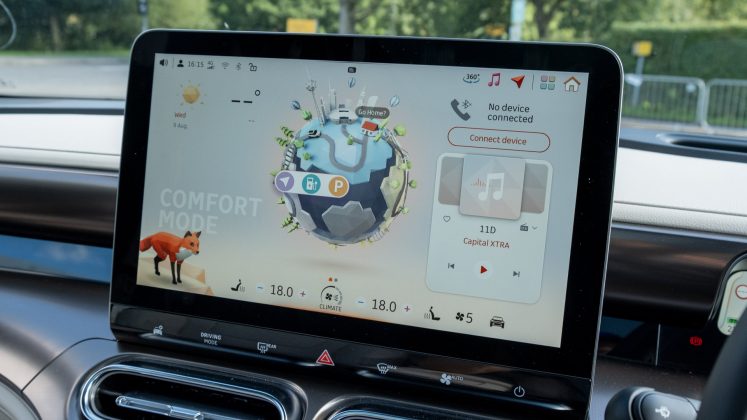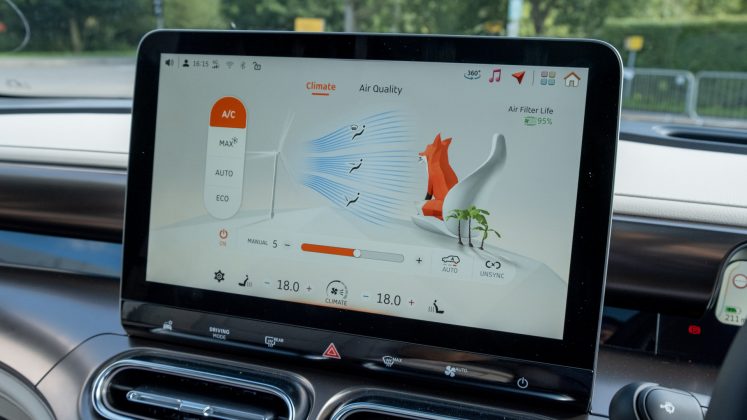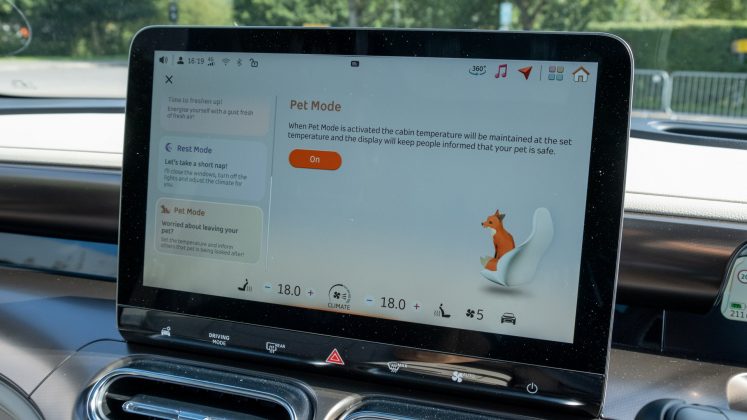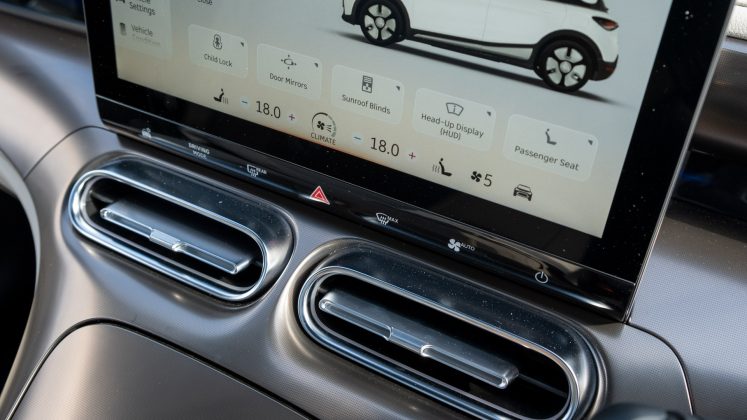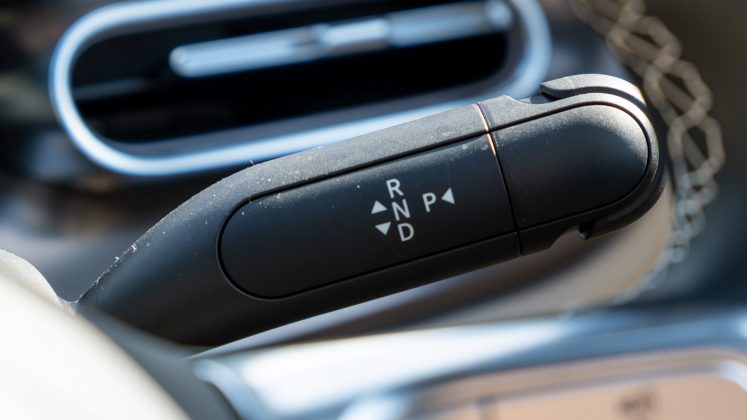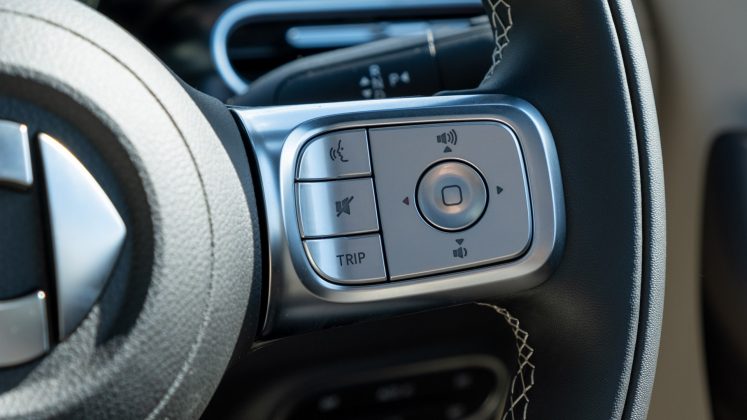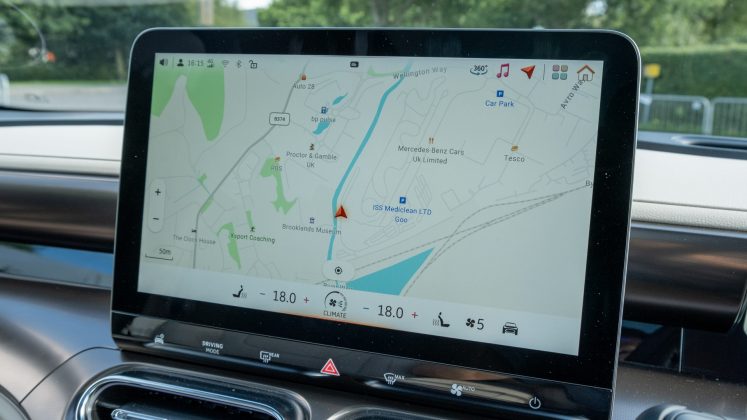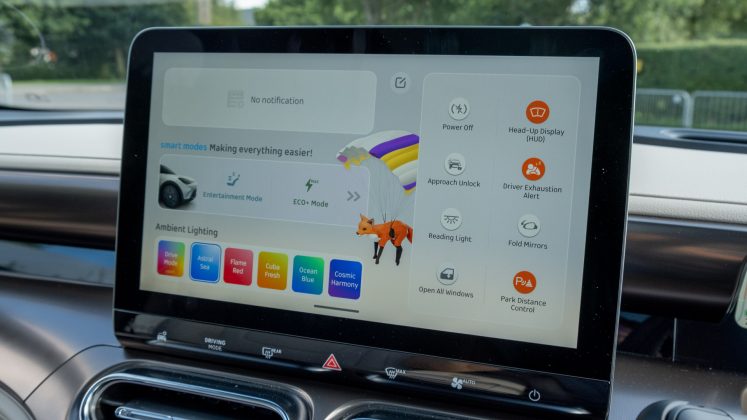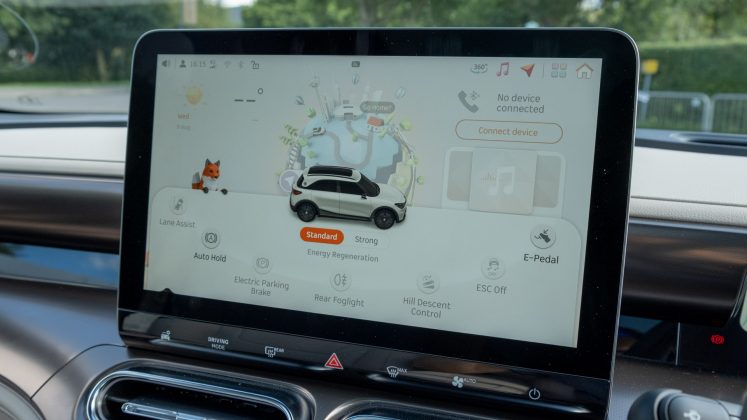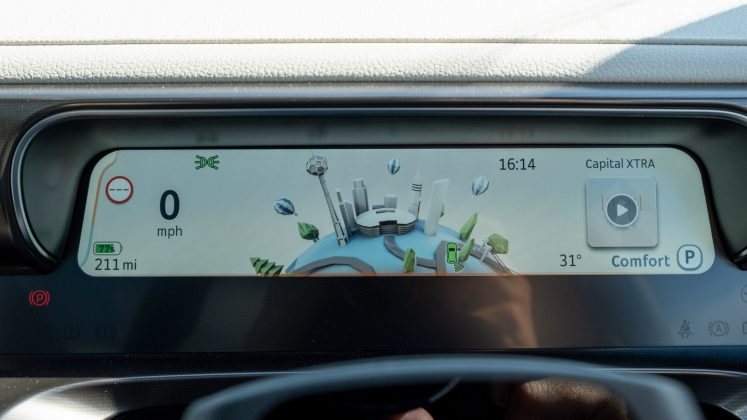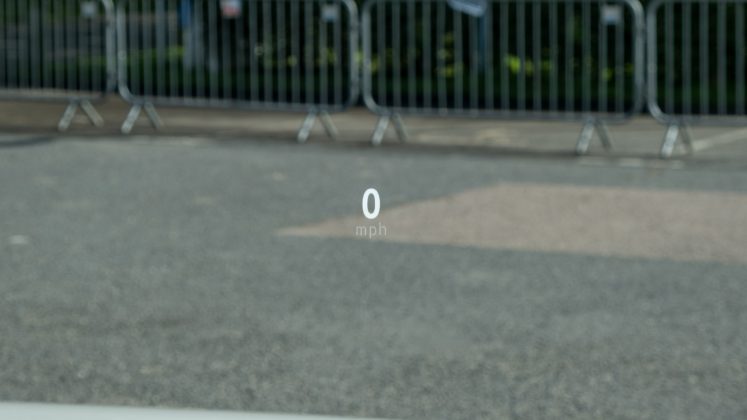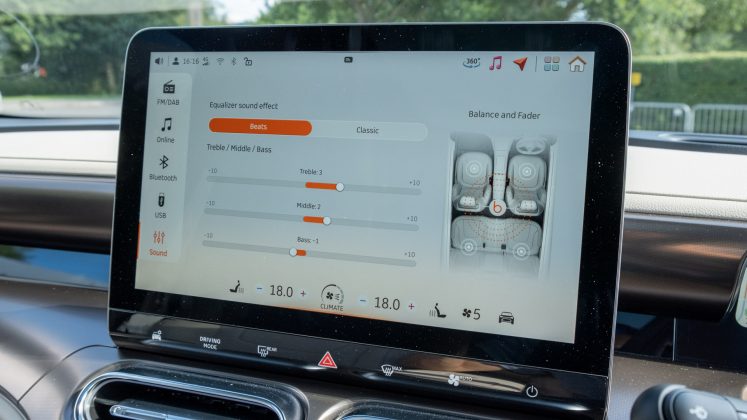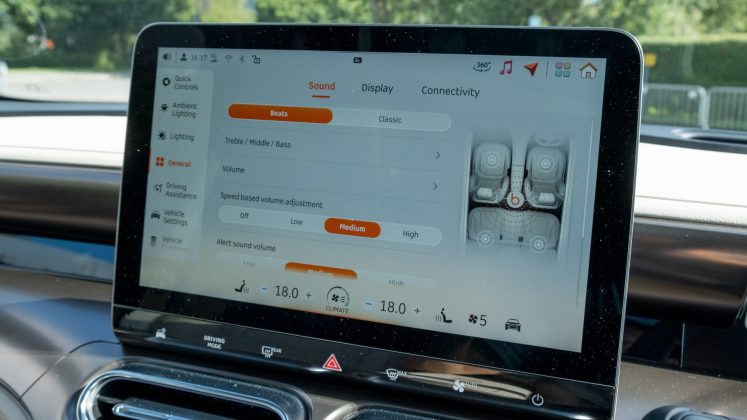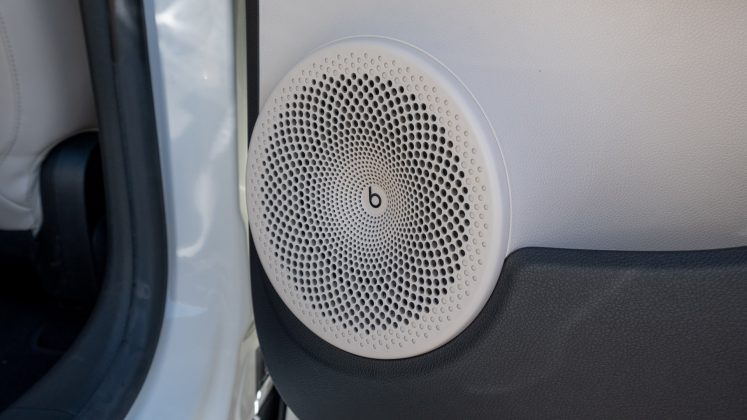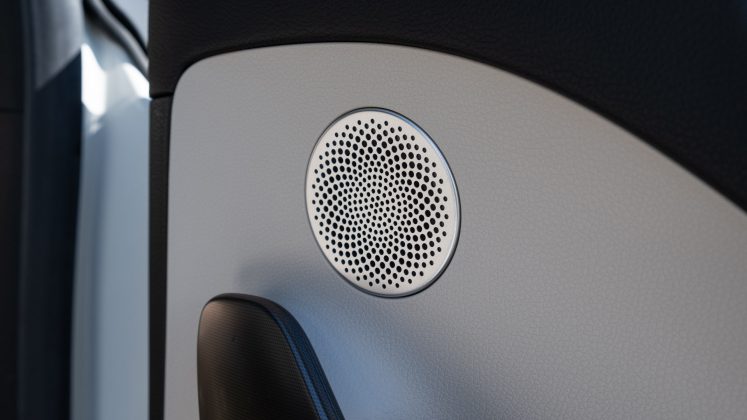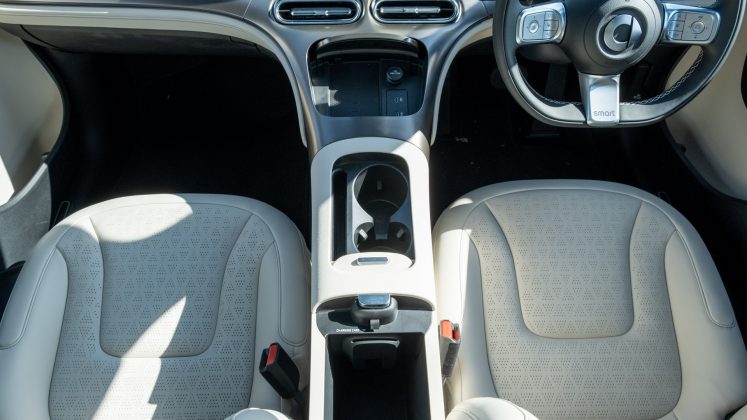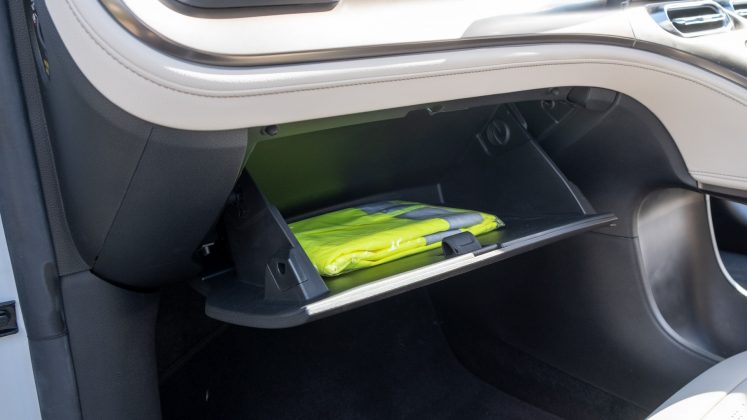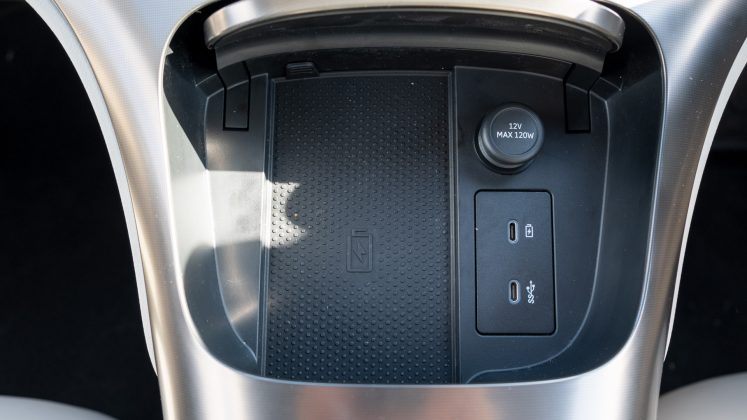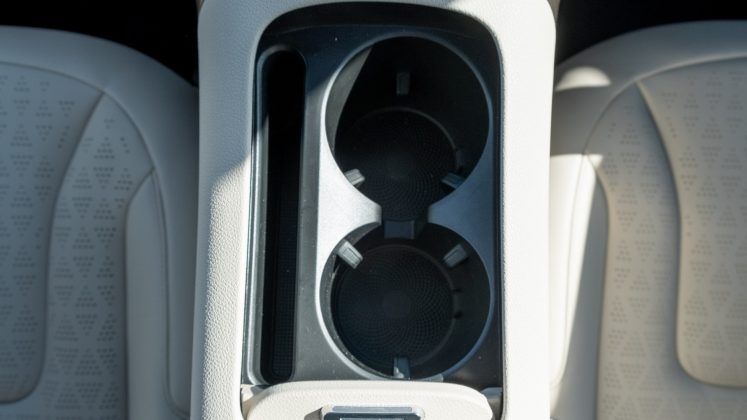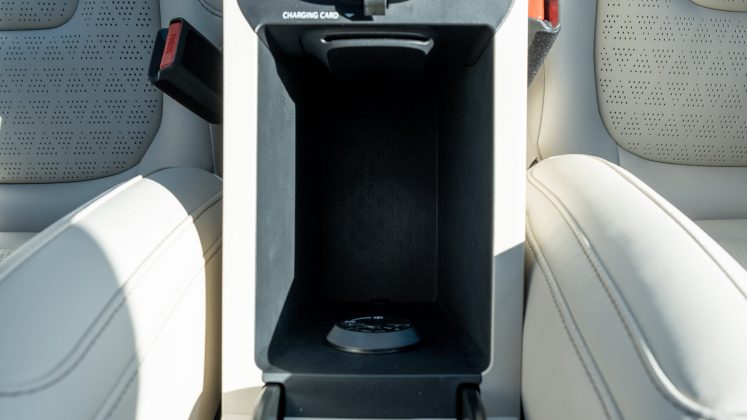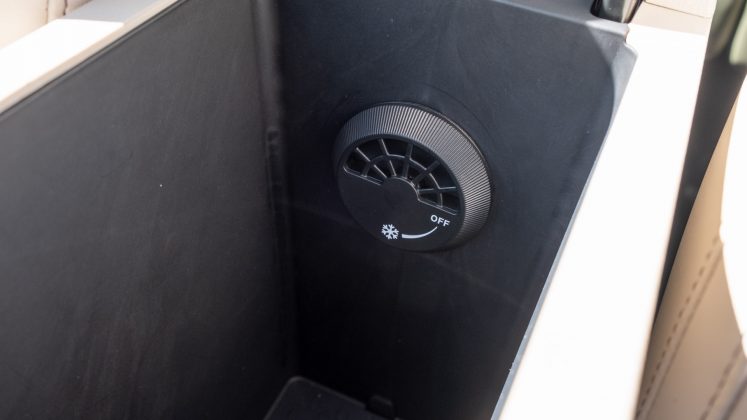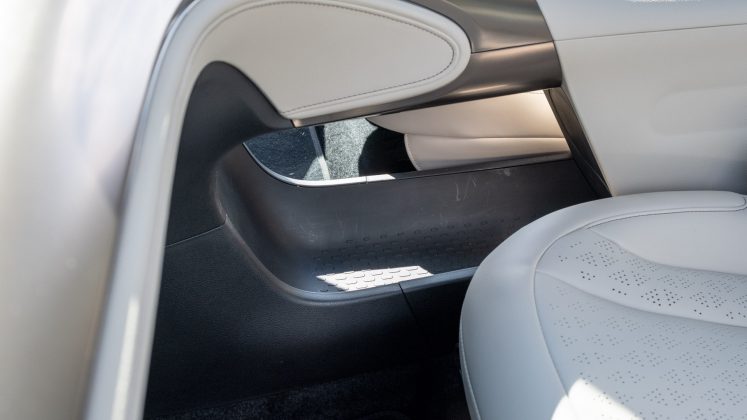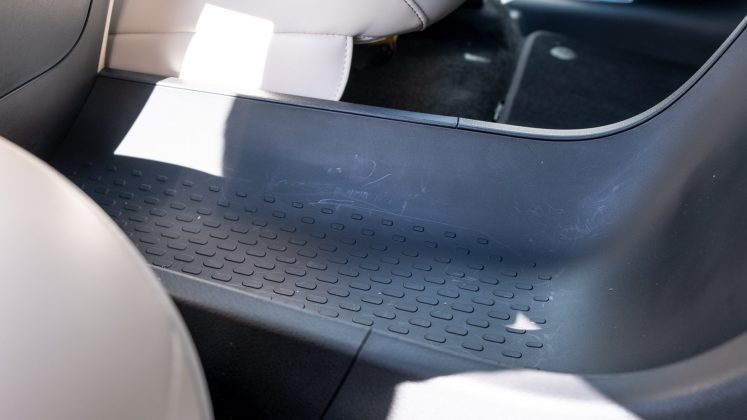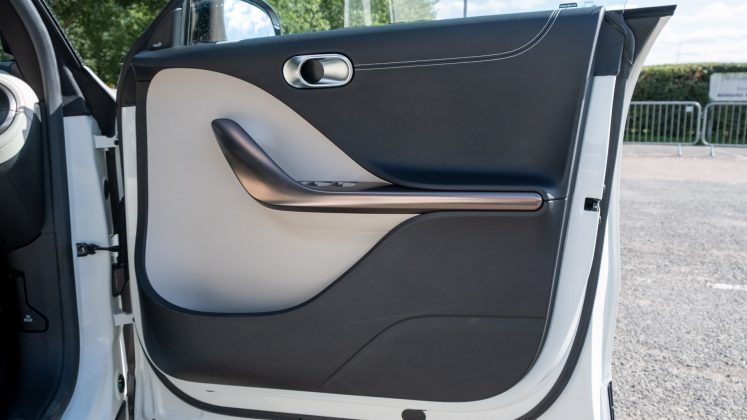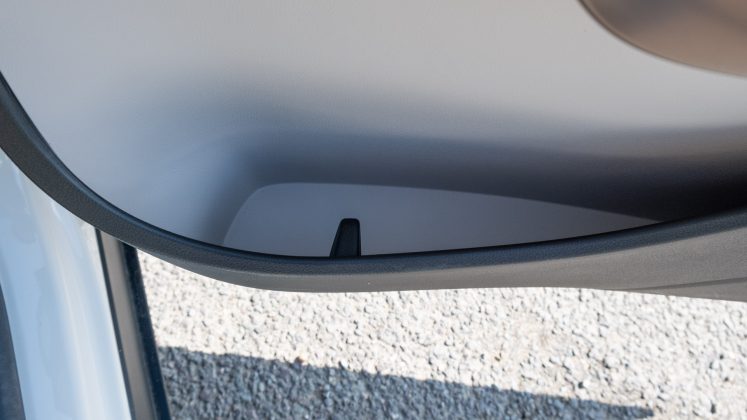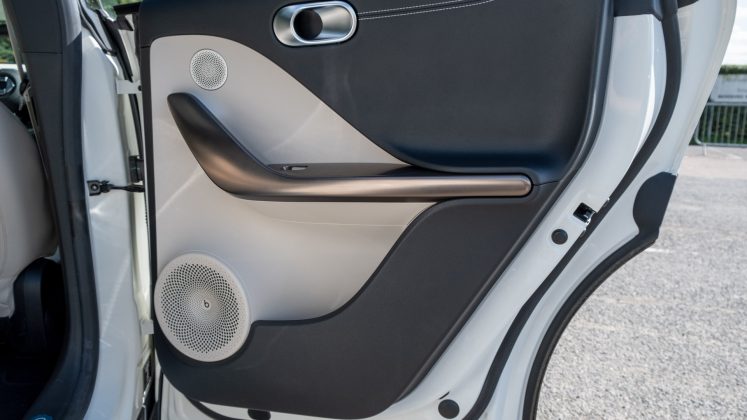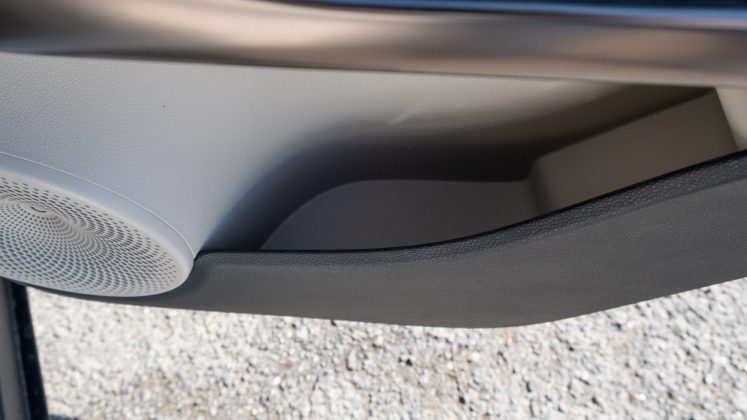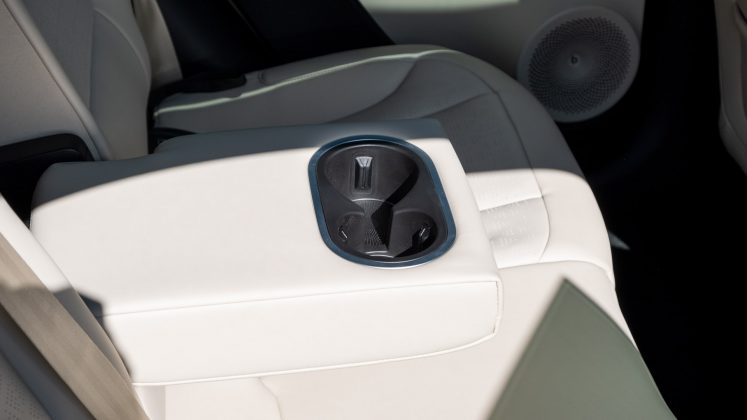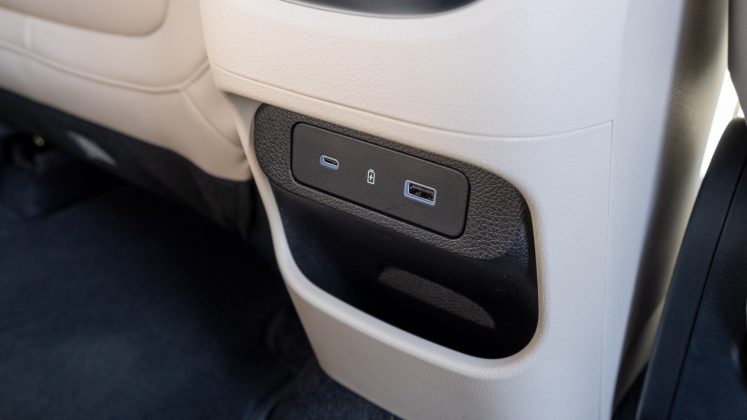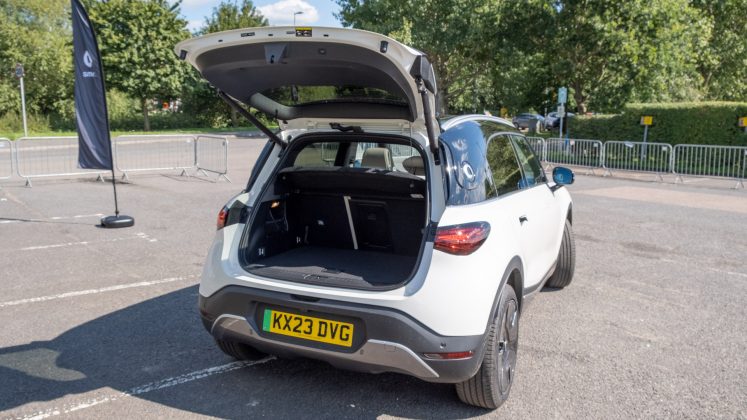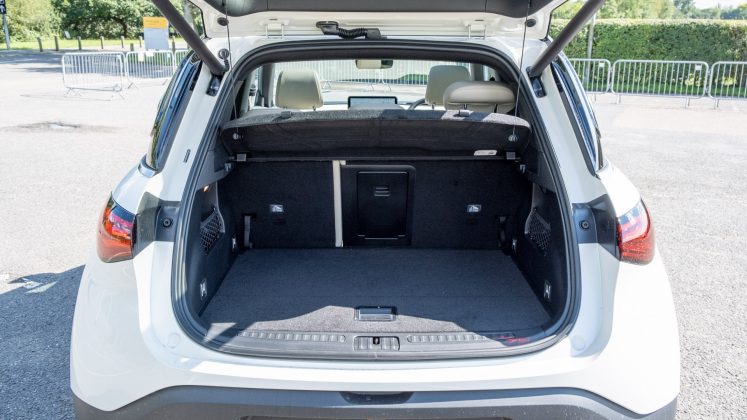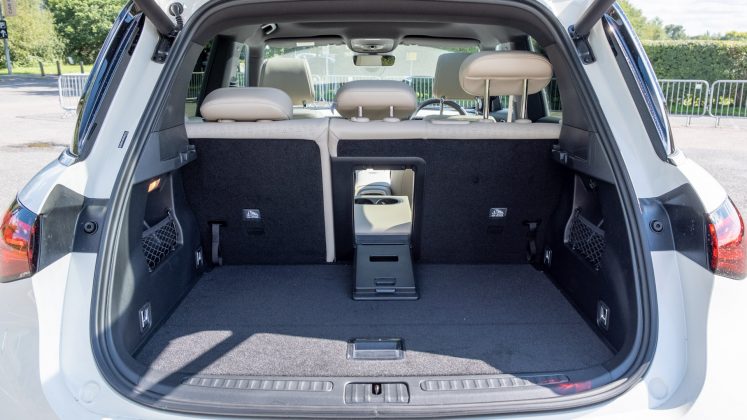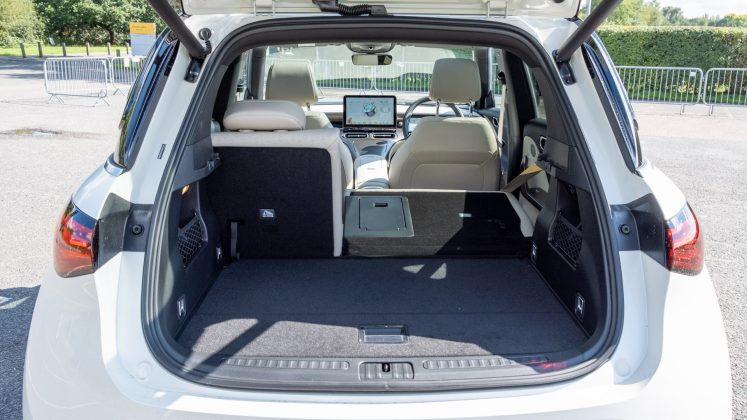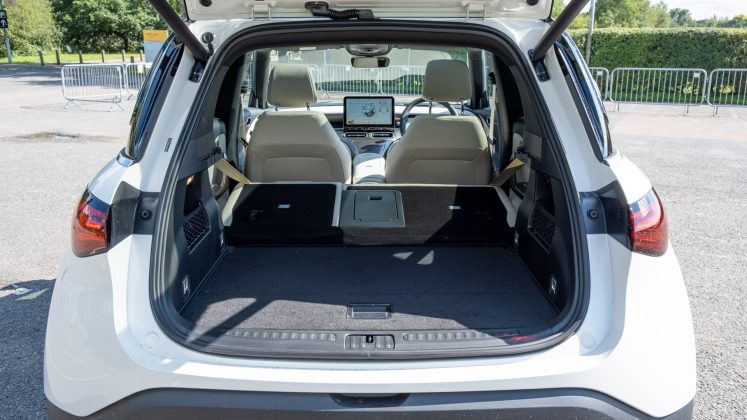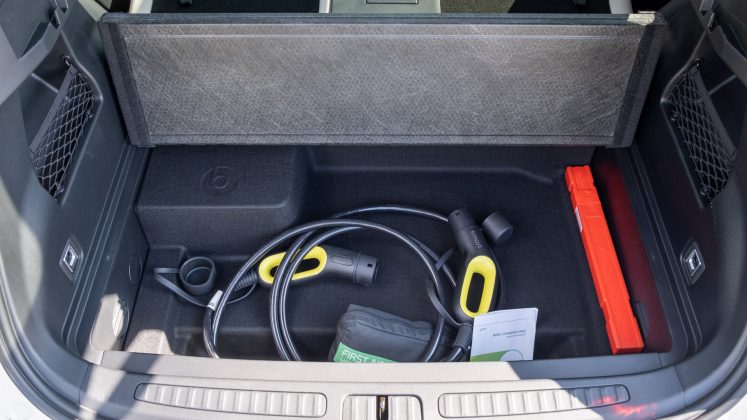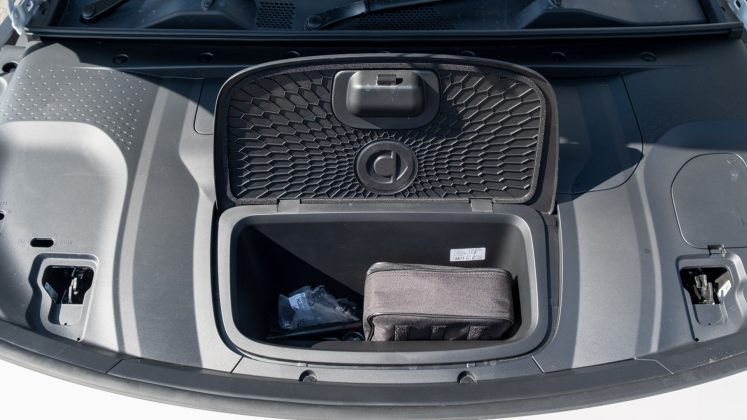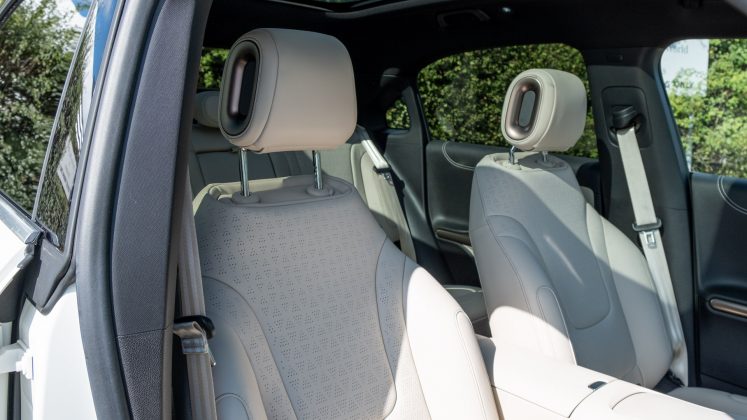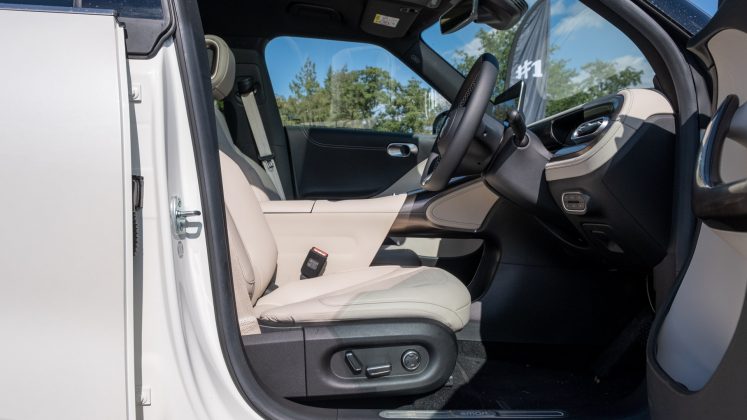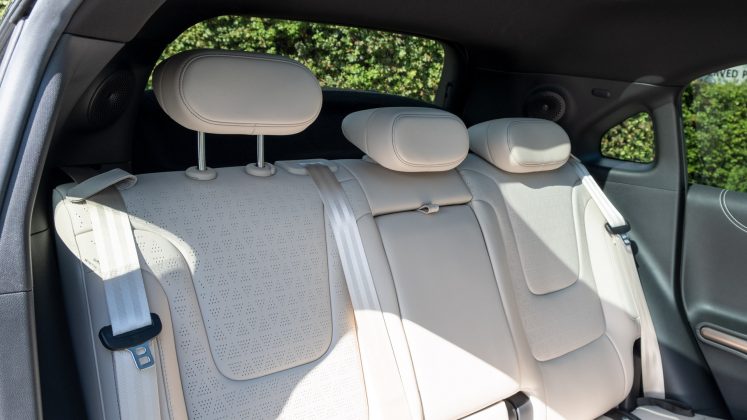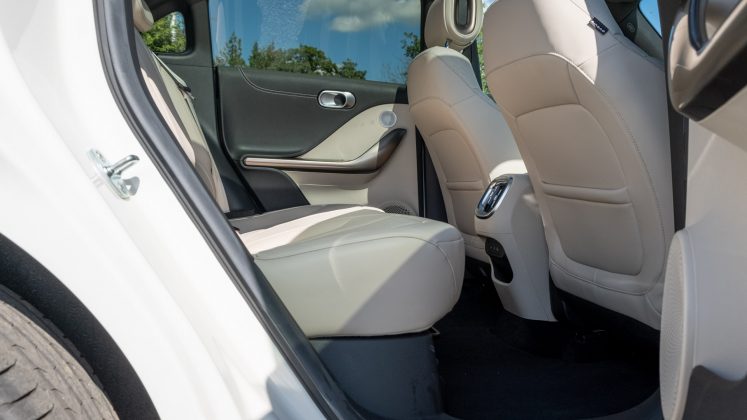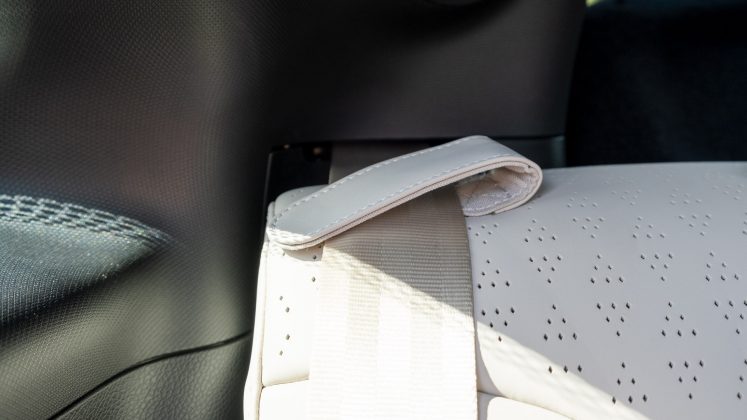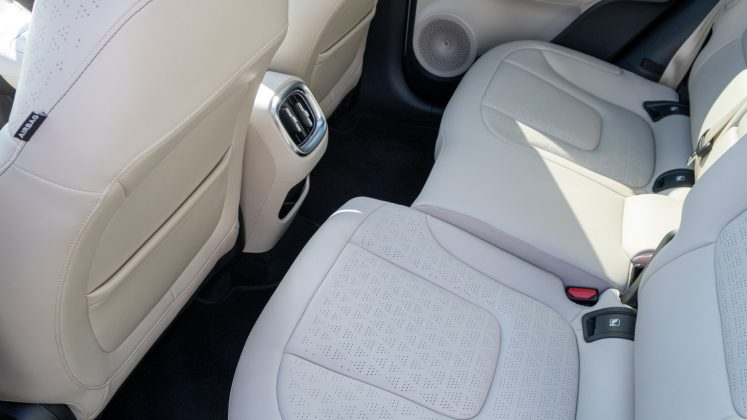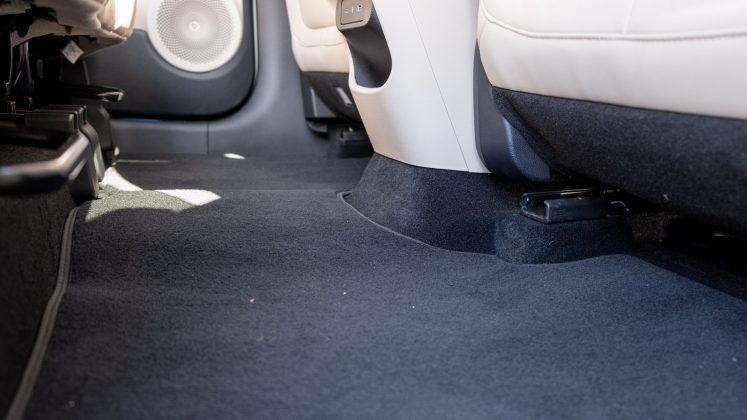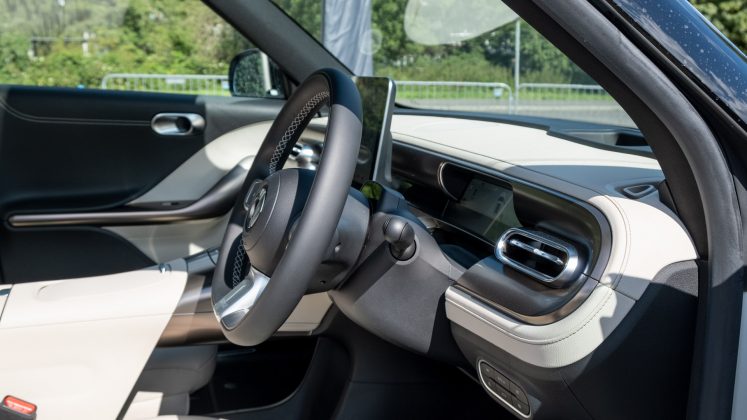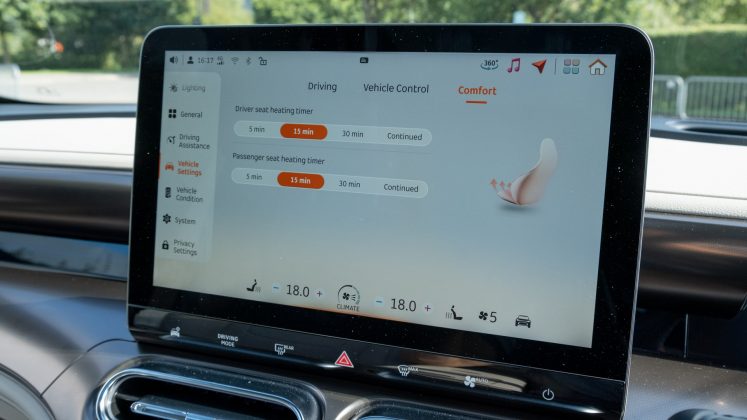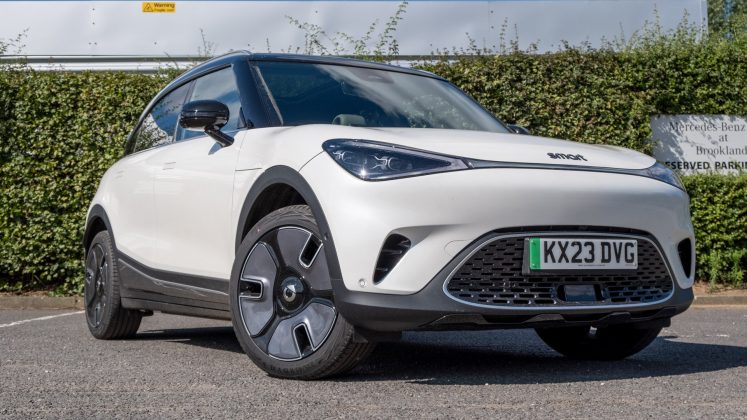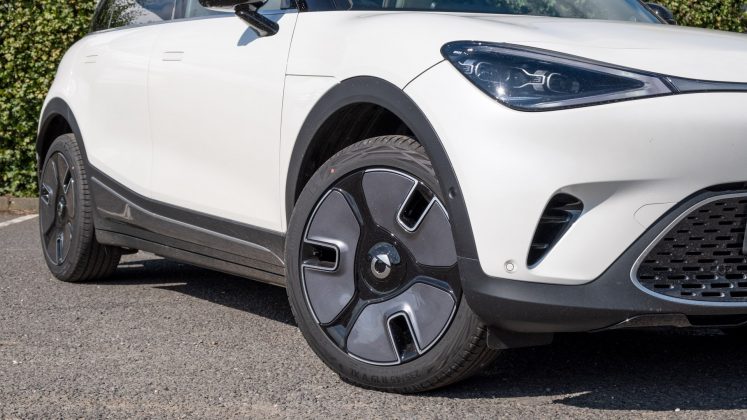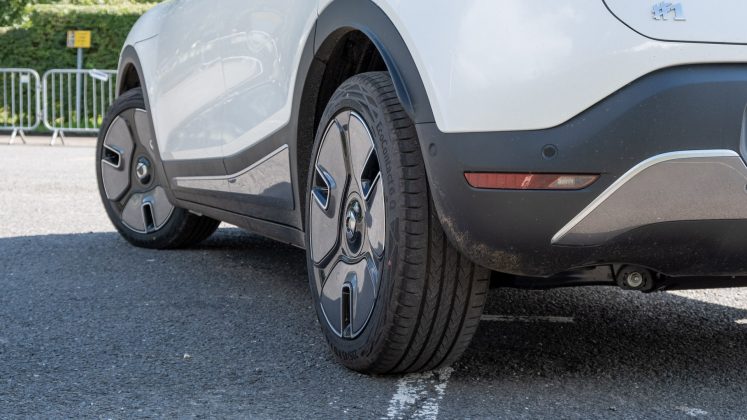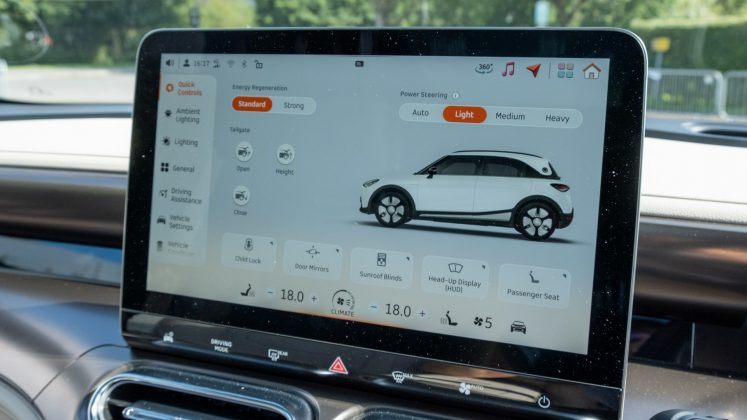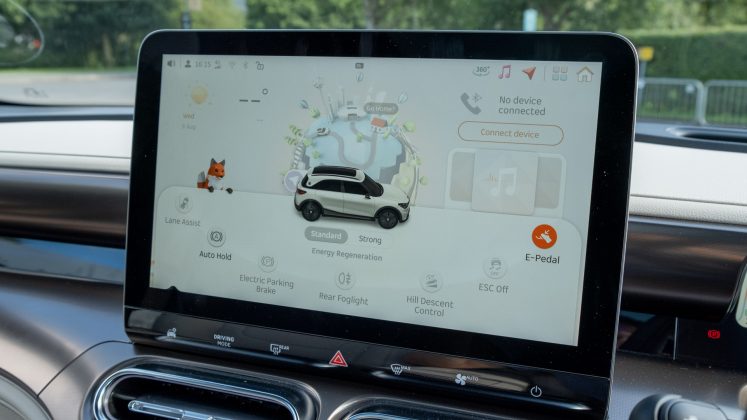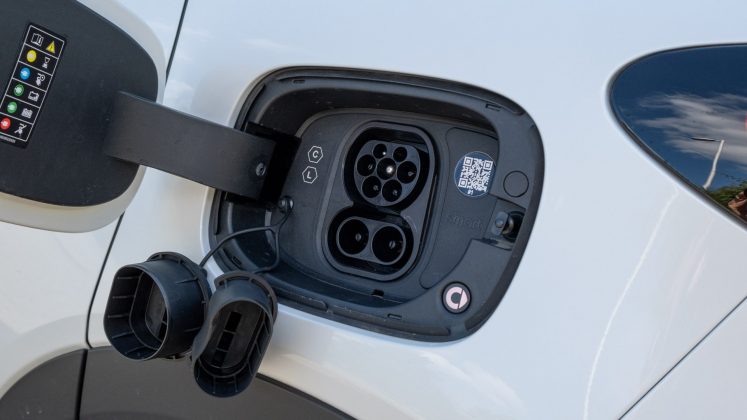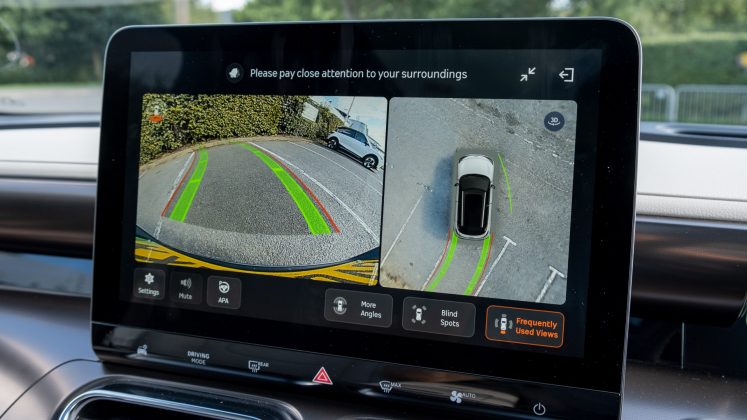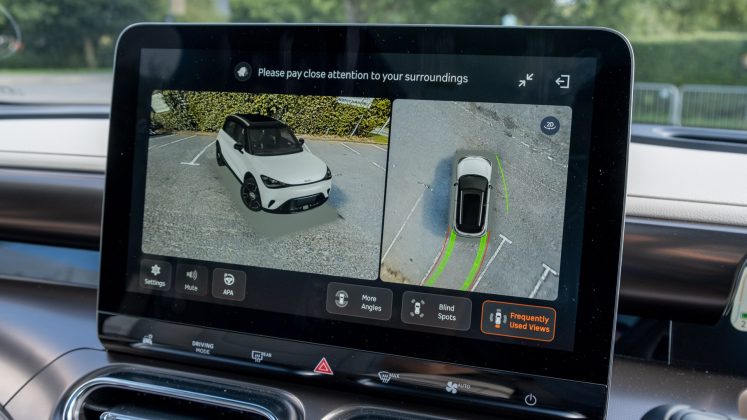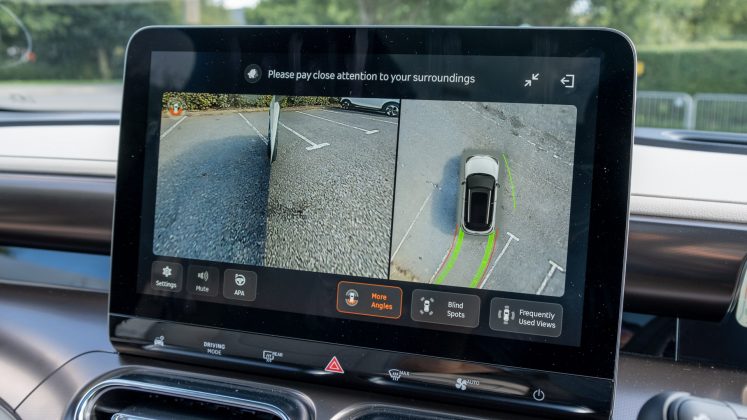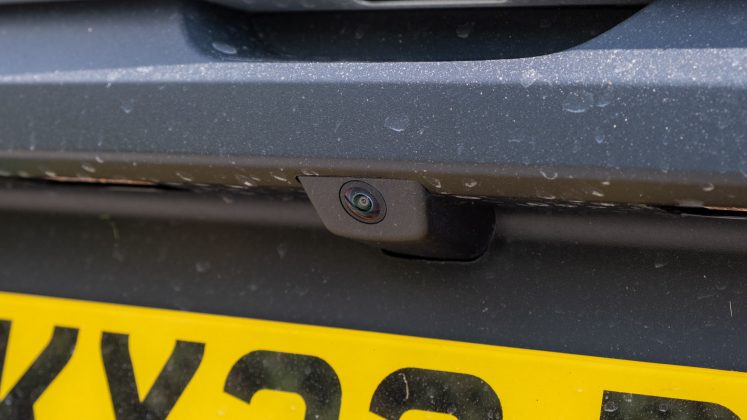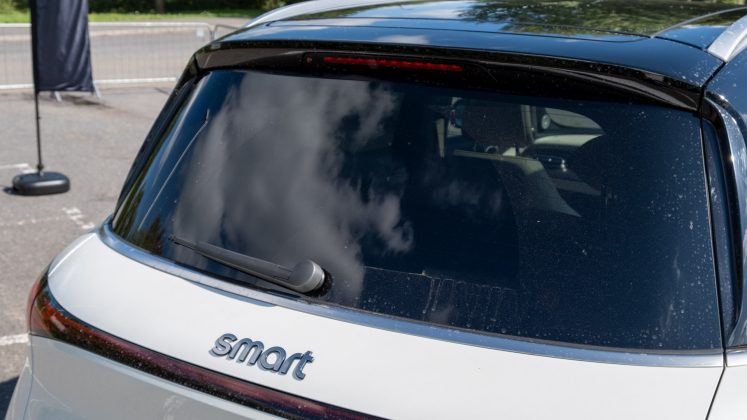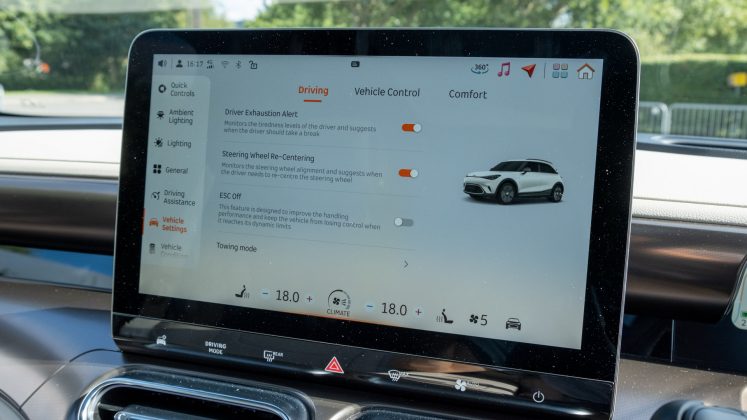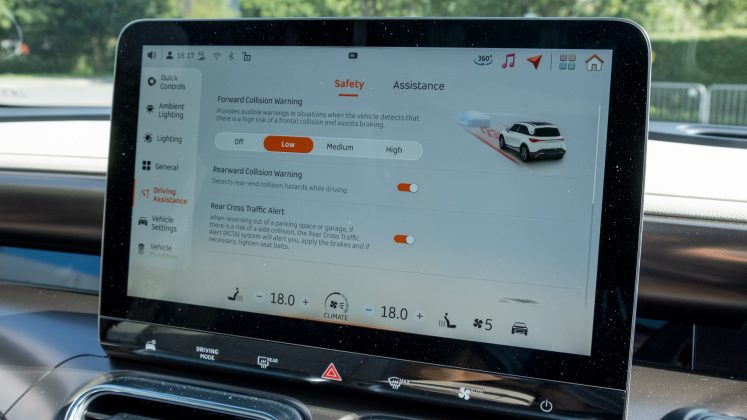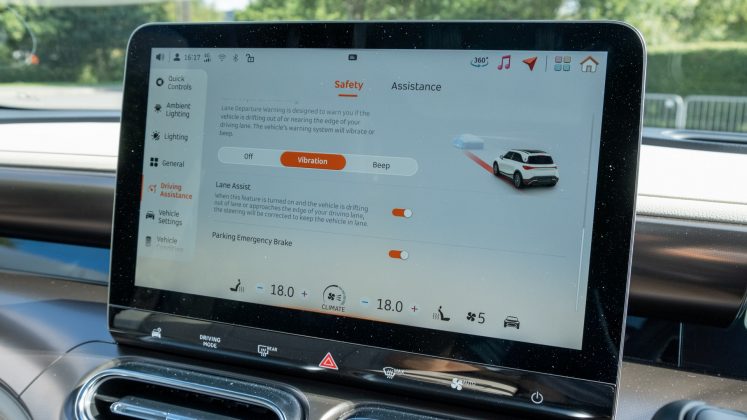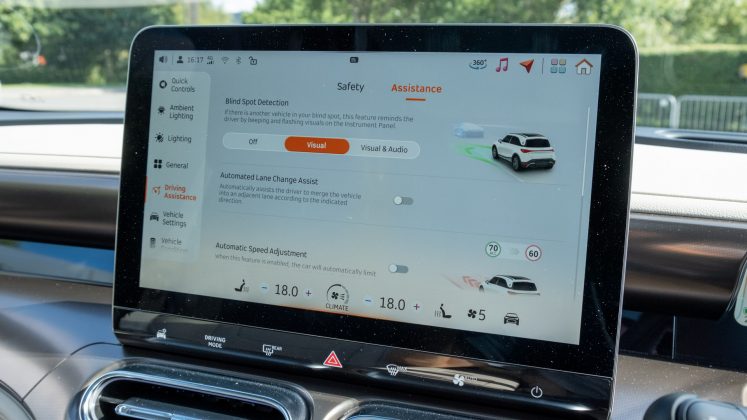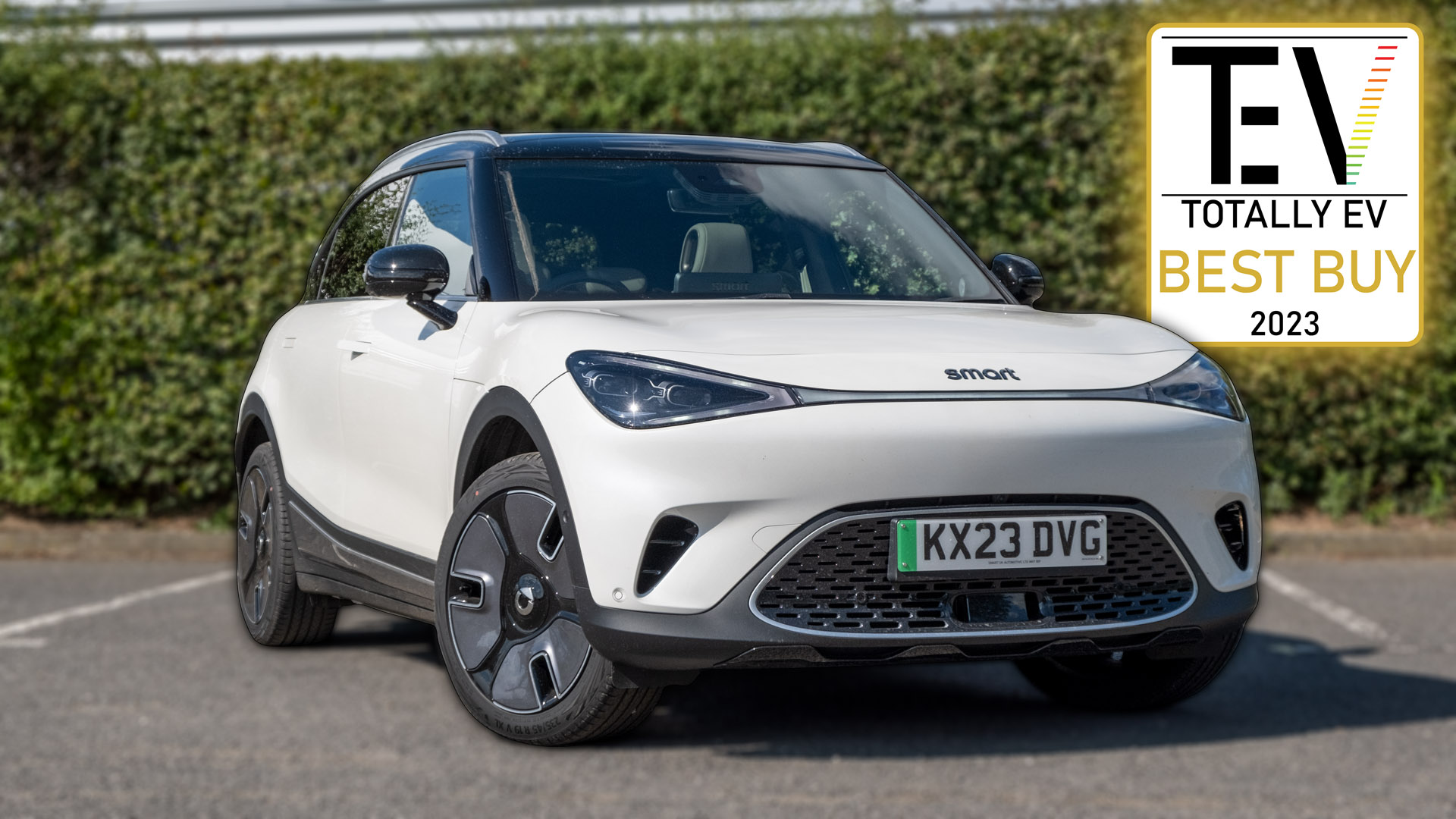Smart has been around since 1994 and is renowned for its small-sized city vehicles, such as the EQ Fortwo. The brand, however, is now heading in a different direction. Indeed, it’s looking to snap up the hackback and small-sized SUV market with the #1 (pronounced, hashtag one).
The strategic change comes after Mercedes-Benz AG sold off half of its share of Smart in 2019 to Geely, the Chinese automaker that also owns Volvo and Polestar. The 50-50 partnership aims to utilise Geely’s know-how in the EV space, while leaving the interior and exterior design up to Mercedes-Benz.
If you’d prefer to watch a review of the Smart 1, head on over to our YouTube channel.
Smart 1 price & competition
There is, however, a lot of competition in this space but the Smart #1 is competitively priced. The entry-level Pro+ costs £35,950, the Premium that we have on review £38,950, and the Brabus model costs £43,450.
At the time of writing and in the UK, all the models house the same 62 kWh battery pack. The key differences are that the Premium trim has more features (including a heat pump) over the Pro+; both have a singular rear motor that outputs 200 kW (268 hp) of power and 343 Nm of torque. The Brabus model on the other hand has two electric motors that output a staggering 315 kW (422 hp) of power and 584 Nm of torque.
In terms of the alternatives, there are a few hatchbacks and saloons to consider: the BMW i4 from £49,995; the Hyundai Ioniq 6 from £47,040; the Polestar 2 from £44,950; the Tesla Model 3 from £42,990; the Honda e from £37,395; the VW ID.3 from £37,115; the Cupra Born from £36,475; the Vauxhall Corsa-e from £33,930; the GWM Ora Funky Cat from £31,995; the Peugeot e-208 from £31,345; the Mini Electric from £31,000; the Renault Zoe from £29,995; the Nissan Leaf from £28,995; the Fiat 500 Electric from £28,195; and the MG4 EV from £26,995.
Given the Smart #1’s slightly raised profile, it is also worth mentioning that there are also all-electric SUVs on the market, such as: the MG ZS EV from £30,495; the Hyundai Kona Electric from £32,450; the Kia Soul EV from £32,845; the Citroen e-C4 from £35,795; the Citroen e-C4 X from £36,390; the Peugeot e-2008 from £36,500; the Kia Niro EV ‘2 64’ from £37,295; the Vauxhall Mokka-e from £38,635; the Volkswagen ID.4 from £38,845; the Skoda Enyaq iV from £38,970; the Hyundai Ioniq 5 from £43,445; the Tesla Model Y from £44,990; the Kia EV6 from £45,245; and the Audi Q4 40 e-tron from £50,630. You’ve also got the MG5 EV, an all-electric estate that starts from £30,995.
Read next: MG4 EV review: The best value EV to date
Smart 1 exterior review
From the exterior, it’s clear that the design comes from Mercedes-Benz. The vehicle’s curvy shape is somewhat reminiscent of the Mercedes EQS, especially due to its headlight design however, still retains Smart’s DNA.
The same could be said about its rear profile, with the elongated taillight reminding us of the Mercedes EQA. Much like the EQA, it is a little disappointing that the wheel arches and sideskirts are not body-coloured. Thankfully, they don’t detract too much from the vehicle’s side profile, as snazzy 19″ alloys come fitted as standard and concealed door handles give it that flush look.
What is actually quite refreshing, is that all the colour options are free – there’s no premium to pay for a colour of your choosing. Better still, there are quite a few to choose from: single-tone finishes include, ‘Digital White Metallic’, ‘Meta Black Metallic’ and ‘Atom Grey – Matte’, while two-tone finishes include an ‘Eclipse Black’ roof and a base colour of ‘Laser Red Metallic’, ‘Quantum Blue Metallic’, ‘Lumen Yellow’, ‘Future Green Metallic’, ‘Cyber Silver Metallic’ and the pictured ‘Digital White Metallic’.
Read next: Hyundai Ioniq 6 review: Better Than Tesla, BMW & Polestar?
Smart 1 interior review
Inside, it’s similarly impressive. It’s certainly far more lavish than the likes of the MG4 EV, Cupra Born and VW ID.3, among many others. We’d go as far as saying that its interior design is arguably the best in its class – there’s beautiful stitching work and materials used throughout the cabin, which ooze with class. It is worth mentioning that the vehicle on review is the Premium trim with genuine leather upholstery. The entry-level Pro+ has artificial leather, while the Brabus has a faux-suede material instead.
The only complaint we have in relation to its interior design is that physical controls are omitted altogether. Indeed, the climate controls are located on the 12.8″ infotainment system, which makes it a faff to use while on the move – a similar complaint we have of some rival offerings.
With that said, there are capacitive shortcuts located at the bottom of the display, allowing for quick access to certain settings; it would have been great if these buttons had haptic feedback, but alas that’s not the case. Elsewhere, there are physical buttons located on the steering wheel and two stalks behind it, one of which serves as a gear selector.
Buy a car phone mount on Amazon (Affiliate)
When it comes to using the Full HD display, it does have a quirky and somewhat childish design with the fox avatar, but that’s quickly forgotten as it’s among the most responsive infotainment systems out on the market. This is thanks to a blazing fast octa-core Qualcomm 8155 7nm chipset, which provides a lag-free experience. Aside from its speed, the system itself is easy to navigate, albeit with a few settings tucked away from the main menu – for example, ‘E-Pedal’ mode can only be accessed by tapping on the left-side shortcut, where you’ll also find the ‘Lane Assist’ toggle; quite odd, as certain driver assistance systems such as ‘Driver Exhaustion Alert’, are found on a separate menu by sliding down from the top right-hand side.
As for the system’s integration with Android Auto and Apple CarPlay, these weren’t supported in our tested vehicle. TotallyEV has been informed that this will come as part of a future firmware update in late 2023, with both working over a wired and wireless connection. Better still, we’ve been promised that they will also feed through turn-based navigation data to the 9.2″ fully digitalised instrument cluster and the Head-Up Display (HUD) – a great addition as this level of integration isn’t always present but yet, helps bolster driving safety and convenience.
In terms of the driver’s display, it is very vivid and somewhat customisable. The HUD is present in the Premium and Brabus trims only and cannot be added to the Pro+ model; this provides projected info of key driving data, such as your traversing speeds or the safety systems in operation.
Speaking of the entry-level trim, it features a six-speaker system only. The other two have a 13-speaker Beats audio system that outputs a staggering 640 Watts of power. It won’t compete with some of the class-leading audio systems that we’ve reviewed but will still provide a good level of engagement and excitement to listeners; in our opinion, it’s a good reason to upgrade to the Premium trim or consider the Brabus model.
Read next: Mercedes EQA review: Compact & luxurious?
Smart 1 storage review
No matter which trim level you opt for, however, you will find the same amount of storage within the cabin. The Smart #1 offers plenty of areas to store your valuables. At the front, you have a sizable glove box, which has been optimised for right-hand drive vehicles. Towards the front of the centre console, there is a wireless smartphone charger that resides next to a 12V socket and two USB Type-C ports (one of which is used for charging).
Further down, you’ll find two cupholders with an area to place your smartphone and a pretty large area under the centre armrest, which is also air-conditioned. This novel feature allows for small beverages or food to be kept at a cool temperature. To add to all of this, there’s a large non-slip open area underneath the centre console, which will accommodate a medium-to-large-sized handbag or a small rucksack.
As for the door bins, the front two are large enough for a 500ml bottle to be taken alongside a purse or wallet, while the rear two are unsurprisingly more limited. At the back of the cabin, you will also find two cupholders within the pulldown armrest compartment and a very small area for storage alongside a USB Type-C and Type-A port for charging towards the rear portion of the centre console.
Of course, when it comes to storage there’s the boot, which offers between 411-421 litres with the seats in place and 976-989 litres with the seats folded flat. In case you’re wondering, the higher storage capacity is linked with the subwoofer being omitted in the entry-level Pro+ trim.
Here’s how it stacks up to other all-electric saloon/hatchbacks: BMW i4 (470/1,290 litres); Nissan Leaf (435/1,161 litres); Tesla Model 3 (425/1,235 litres); Hyundai Ioniq 6 (401/1,100-1,300); VW ID.3/Cupra Born (385/1,267 litres); Polestar 2 (405/1,095 litres); Renault Zoe (338/1,225 litres); MG4 EV (363/1,177 litres); Peugeot e-208 (311/1,106 litres); Vauxhall Corsa-e (267/1,076 litres); GWM Ora Funky Cat (228/858 litres); Mini Electric (211/731); Fiat 500 Electric (185/550 litres); Smart EQ Fortwo (260/360 litres).
As you’ll note, it fares pretty well in comparison to smaller-sized vehicles, however, when pitted against all-electric SUVs, it’s not as impressive: Tesla Model Y (854/2,100 litres); Skoda Enyaq iV (585/1,710 litres); VW ID.5 (549/1,561 litres); VW ID.4 (543/1,575 litres); Hyundai Ioniq 5 (520/1,587 litres); Audi Q4 e-tron (520/1,490 litres); Citroen e-C4 X (510/1,360 litres); Kia EV6 (490/1,300 litres); MG ZS EV (448/1,375 litres); Kia Niro EV (475/1,392 litres); Peugeot e-2008 (434/1,467 litres); Mercedes EQA (340/1,320 litres); Kia Soul EV (315/1,339 litres); Citroen e-C4 (380/1,250 litres); Hyundai Kona Electric (332/1,114 litres); Vauxhall Mokka-e (310/1,060 litres). As for the MG5 EV estate, it offers 479 and 1,367 litres, respectively.
In terms of practicality, it’s got a hatchback design with an electrically operated tailgate that comes fitted as standard. There are 60:40 split-folding rear seats, an integrated ski latch and a flat loading bay. There’s a large underfloor compartment for your charging cables and there’s even a very small 15-litre frunk area (a compartment under the bonnet).
Read next: VW ID.3 review: The newly improved electric hatchback
Smart 1 comfort review
On the subject of practicality, the rear seats can recline and have a sliding function, which is pretty much unheard of in the small-sized vehicle segment, and is a rarity even in larger-sized SUVs.
It’s equally surprising that both headroom and legroom are a non-issue. At the rear, 6-foot 2-inches (188cm) individuals can be sat comfortably, and given there is no transmission tunnel, the rear middle occupant can also feel at ease on longer journeys. With that said, the rear seats are slightly diagonally wedged and can cause discomfort on the thigh muscles, but given the amount of legroom, this shouldn’t cause too much of an issue.
In terms of comfort, the front seats are heated and have electronic controls as standard. However, the rear seats and the steering wheel aren’t, and nor is there an option to add said functionalities. What is fitted across the entire trim range is a fixed panoramic glass roof, which brings in a lot of extra light within the cabin. Should you want to block out the light, there is an electronically operated sunshade. Great additions, as most of its competitors charge extra for these features.
As for cabin noise, the Smart #1 is well-insulated. In fact, in order to keep the noise down to a minimum, the manufacturer has incorporated small fabric hooks for the rear outer seatbelts. This acts as a runner and prevents the plastic part of the tongue from rattling on the door frame. A very small but useful addition. However, there is a small amount of tyre noise that creeps in at higher speeds and there is a little bit of wind noise that can be heard whistling past the wing mirrors.
Read next: Citroen e-C4 X review: A blended e-C4 & C5 X?
Smart 1 performance review
So far, everything is rather positive, however, there is a key area where the vehicle is let down, and that’s in its suspension system. No matter which drive mode is selected, the Smart #1 has a rather firm ride; it’s unsettled when pottering around town and doesn’t cope well with anomalies, potholes or speed bumps. Granted it’s not horrific and isn’t as stiff as the likes of the MG ZS EV, but given the target market and rival setups, it’s something to consider.
Its stiffened setup does, however, yield better results on winding roads. There’s less body roll in comparison to most small-sized SUVs, and thanks to its rear-wheel drive (RWD) or all-wheel drive AWD) configuration, it’s quite engaging to drive. Intriguingly, the drive mode isn’t linked with the power steering setting – at least outside of ‘Auto’ mode. Indeed, one can drive in Sport mode with an extremely light feel. Granted, we’d not recommend such a combination as it will feel overly disjointed, but it’s excellent to think that the manufacturer has provided that level of customisation.
In terms of the driver’s input and feel, you’re not going to get the utmost engagement even in its ‘Heavy’ steering mode preset, but for the most part, the Smart #1 will leave you content.
This brings us to performance. The Pro+ and Premium have a singular rear-mounted motor, which combines with the 62 kWh battery pack to output 200 kW (268 hp) of power and 343 Nm of torque to the rear wheels only. It’s claimed to get from 0-62mph in 6.7 seconds. The Brabus model has two electric motors, one on each axle, which combine with the 62 kWh battery to output a staggering 315 kW (422 hp) of power and 584 Nm of torque. The Brabus model is claimed to achieve 62mph from a standstill in just 3.9 seconds and operates on AWD configuration.
Testing the RWD Premium model, we used Racelogic’s Performance Box Touch to record a 0-20mph time of 1.64 seconds, 0-30mph in 2.46 seconds, 0-60mph in 5.75 seconds and 50-70mph in 2.6 seconds. Top speed is limited to 112mph. These times are rapid, and we suspect most will find the Pro+ and Premium to surpass their expectations; those wanting to knock their socks off will want to look at the more expensive Brabus model instead.
What is equally impressive is its electric range. In our mixed driving tests, we managed to achieve an impressive 250-270 miles from its 62 kWh battery pack. It is worth considering that the Pro+ doesn’t have a heat pump, while the tested Premium and the Brabus models do have an energy-efficient pump that safely feeds dissipated heat from the vehicle’s electrical systems and battery pack back into the cabin.
To put the Smart #1’s tested range into context, here’s how it stacks up to all-electric saloons and hatchbacks: Tesla Model 3 Long Range 310 miles; Polestar 2 Long Range Single Motor and Hyundai Ioniq 6 250-270 miles; BMW i4 eDrive40 240-260 miles; Tesla Model 3 RWD 230-250 miles; the MG4 EV Long Range 220-240 miles; VW ID.3 220-230 miles; Cupra Born 210-220 miles; Nissan Leaf Tekna e+ and Renault Zoe R135 200 miles; Peugeot e-208 180 miles; Fiat 500 Electric and GWM Ora Funky Cat 140-160 miles; Vauxhall Corsa-e 130-140 miles; and Mini Electric 100-110 miles.
As for the all-electric SUV market: VW ID.5 325 miles; Skoda Enyaq iV 80 300 miles; Tesla Model Y Long Range 250-280 miles; Hyundai Kona Electric 64 kWh, Kia Soul EV (with heat pump), Audi Q4 e-tron, and VW ID.4 (no heat pump) 260 miles; Kia EV6 RWD 240-260 miles; Hyundai Ioniq 5 AWD, MG ZS EV Long Range and Kia Niro EV (no heat pump) 230-250 miles; MG5 EV 210-230 miles; Mercedes EQA 210-220 miles; Citroen e-C4 and e-C4 X 180-200 miles; Vauxhall Mokka-e 150-170 miles; and Peugeot e-2008 140-160 miles.
What we’re trying to convey with our long list of tested vehicles, is that the Smart #1’s electric range is actually quite impressive, be it in comparison to its direct rivals or others.
It’s equally great to see that there is a true one-pedal drive mode. While this has to be selected each time upon switching on the vehicle through the infotainment system, it does allow for a less cumbersome drive within the city. Should you want to still utilise the physical brake pedal, there are the ‘Standard’ and ‘Strong’ presets to select from.
Aside from recouping energy while on the move, you can plug it in. Its CCS port supports up to 150 kW of input, meaning it’ll take 30 minutes to go from 10-80% at an appropriate charge point. As for the Type 2 port, the Premium and Brabus models feature an impressive 22 kW onboard charger that comes fitted as standard (this usually costs extra on rival offerings), which means these models can go from zero to full charge in just three hours. The Pro+ model has a 7.4 kW onboard charger, which means it’ll take 7hrs 30mins instead.
Read next: Tesla Model 3 review: Should you buy into the hype?
Smart 1 safety review
As for safety, the Smart #1 achieved 5/5 stars in Euro NCAP’s tests. It scored a whopping 96% in Adult Occupancy, 89% in Child Occupancy and 88% in the Safety Assist tests. Extremely impressive results and a staple of the brand’s pedigree.
It’s not surprising to see a high ‘Safty Assist’ score, as there are a plethora of driver assistance systems that come fitted as standard: BSM (Blind Spot Monitoring), EAB (Emergency Autonomous Braking), HWA (Highway Assist), EMA (Evasive Manoeuvre Assist), ELKA (Emergency Lane Keep Assist), TJA (Traffic Jam Assist) and ACC (Adaptive Cruise Control) with Stop & Go technology.
ACC does an excellent job of keeping you at a safe distance from the leading vehicle and doesn’t feel jerky, while HWA provides steering support on the motorway. Our only complaint is that both ‘Lane Assist’ and Driver Exhaustion Alert’ cannot be permanently disabled and instead require you to faff around with the infotainment system each time you power on the vehicle. The latter is particularly sensitive and emits bongs too often.
Speaking of the 12.8″ display, you’ll be able to see the fantastic high-resolution 360-degree cameras when parking. Front and rear sensors also come fitted as standard, and visibility throughout the cabin is flawless. Should you want APA (Automatic Parking Assist), you’ll want to opt for either the Premium or Brabus model.
Read next: Kia Niro EV review: An upgraded e-Niro?
TotallyEV’s verdict on the Smart 1
The Smart #1 might have a rather stiff suspension setup but it’s otherwise an excellent electric vehicle that’s competitively priced. It’s stylish both inside and out, has plenty of tech within the cabin, is loaded with driver assistance systems, is practical with great headroom and legroom at the front and rear of the cabin, is fun to drive and more importantly, boasts an impressive electric range.
It’s therefore very easy to recommend the Smart #1 to anyone looking to buy a new EV and as such, receives TotallyEV’s Best Buy award; it’s also among one of the highest-rated vehicles on the site.
Would you pick the Smart #1 over its rivals? Let us know in the comments section below or via social media; we’re on: YouTube, Instagram, Facebook, Twitter and LinkedIn.

